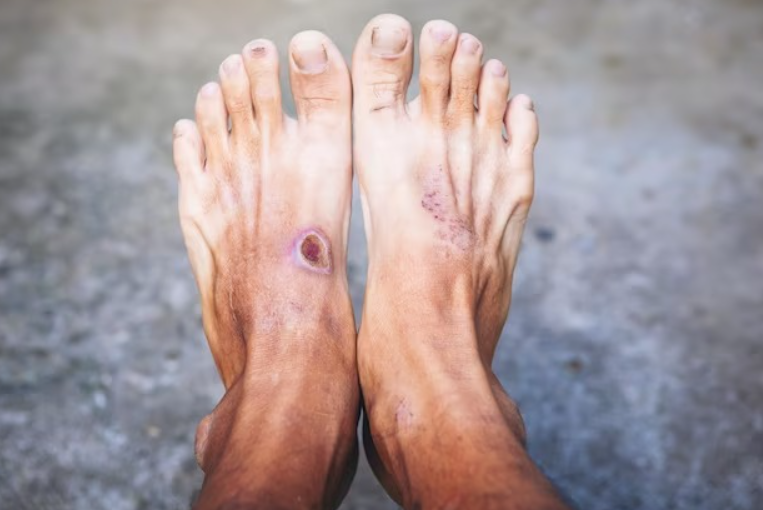
- By: admin
- August 22, 2024
Diabetic Wounds
Wound management in diabetics is of great concern in both the clinical and social dimensions. More than 30% of diabetic patients develop non-healing wounds. Leg or foot ulcers are the most common wounds in diabetic patients. Hyperglycemia complicates the natural wound healing process.
50–70% of all leg amputations are due to diabetic wounds, and it is estimated that in every 30 seconds, one leg is amputated worldwide.
Diabetes delays the healing process, leading to a nonhealing wound associated with psychiatric stress and depression. Non-healing wound cause difficulty walking and infections leading to cellulitis, abscess, osteomyelitis, gangrene and septicemia
Several factors affect wound healing in diabetes.
- Activities at the molecular level like impaired cellular functions (neutrophils, macrophages, etc.), impaired growth factor production, and microvascular complications.
- Hypoxia is due to overglycation of hemoglobin. Alteration of RBC membranes and narrowing of blood vessels.
- Diabetic peripheral neuropathy leads to sensory, motor and autonomic dysfunction (angiogenesis & re-epithelialization), each of which contributes to delayed wound healing.
- Due to delayed recruitment of inflammatory cells in the wound site, a bacterial biofilm develops at the wound site, which safeguards microbes from antimicrobial agents and immune cells. This interrupts the healing mechanism and is one of the most common causes of lower limb amputation.
- Diabetes alters the balance of matrix metalloproteinases (MMP). These are enzymes produced by different cells in the skin, such as neutrophils, macrophages, epithelial cells and fibroblasts. In normal wound healing, MMPs remove denatured elements and bacteria. This will shorten the inflammatory phase and promote the granulation phase during wound healing.
Tips to prevent the formation of non-healing ulcers and subsequent amputation.
- Due to their low sensitivity, diabetes patients may not become aware of the repeated trauma caused to their lower extremities due to daily activities or foot wear. Daily care of the foot before bed. Before bed, wash your feet with lukewarm water, dry and massage with moisturizer or virgin coconut oil.
- Daily inspection of extremities for any skin color change, swellings or abrasions.
- Always wear cotton socks and protective shoes.
- Expose your feet to sunlight daily.
- Regular exercise and more fruits. Avoid stimulants, spices and non-veg.
- Avoid nighttime food.
- Good sleep.
Acupuncture and color therapy will hasten the healing process with amazing results.
Thankyou
Dr Arun Vasudevan
Founder director IDRP
BHMS,MBS (UK), D.Acu,
IDRP, TKD Road, Muttada PO, Trivandrum.
Follow us on: https://www.facebook.com/drarunvs
Instagram: https://www.instagram.com/drarunvs/
Tags: accupressure, best treatment for diabetes, depression, diabetic reversal, heart attack, idrp
